
Kotpuli, also known as Kotpuliyar and Kotpuli Nayanar, was a Nayanar saint, venerated in the Hindu sect of Shaivism. He is generally counted as the fifty-seventh in the list of 63 Nayanars.
Perumizhalai Kurumba Nayanar is the 22nd of 63 Nayanar saints of Hinduism. Traditional hagiographies like Periya Puranam and Thiruthondar Thogai describe him as a great devotee of the Hindu god Shiva. He was a follower of another Nayanar, Sundarar.
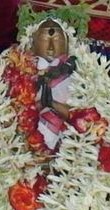
Apputhi Adigal, also spelt as Apputhi Adikal, Atputhi Adigal, Apputi Adigal, Appoodi Adikal, Appoothi Adikal and Appudhi Adigal and known as Appuddi Nayanar, was a Nayanar saint, venerated in the Hindu sect of Shaivism. He is generally counted as the twenty-fifth in the list of 63 Nayanars. He is described as a contemporary of Appar or Thirunavukkarasar, one of the most prominent Nayanars.
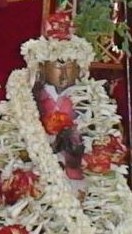
Somasi Mara Nayanar, also known as Somasi Maranar, Somasi Marar, Somasimarar and Somasira Nayanar, is a Nayanar saint, venerated in the Hindu sect of Shaivism. He is generally counted as the thirty-third in the list of 63 Nayanars. He is also called Marar, Maran and Mara Nayanar, names he shares with Ilayankudi Mara Nayanar. The two Nayanars are generally differentiated by the prefixes "Somasi" and "Ilayankudi". He was a contemporary and devotee of Sundarar.

Isaignaniyar, also spelt as Isainaniyar, Isaignaniyaar, Isaignaniar and Isaijnaniyar and also known as Isai-jnani Ammaiyar, is the mother of Sundarar, one of the most prominent Nayanar saints. She is herself regarded as a Nayanar saint, venerated in the Hindu sect of Shaivism, along with her husband Sadaiya Nayanar. She is generally counted as the last in the list of 63 Nayanars.

Sadaiya Nayanar or Sadaiyar is a 7th century Nayanar saint in the Hindu sect of Shaivism, venerated for being father of the prominent saint Sundarar rather than for individual merit. He and his wife Isaignaniyar are generally counted as sixty-second and sixty-third on the list of the sixty-three Nayanar saints. Sundarar is the only Nayanar with both parents venerated.
Eyarkon Kalikkama Nayanar, also known as Eyarkon Kalikama Nayanar, Kalikkama Nayanar, Kalikamba Nayanar, Kalikkamar, Kalikamar, Kalikkambar, Yeyarkon Kalikkamar and Eyarkon Kalikkamar, is a Nayanar saint, venerated in the Hindu sect of Shaivism. He is generally counted as the 29th in the list of 63 Nayanars.

Sirappuli Nayanar, also known as Sirappuli, Sirapuli Nayanar, Sirappuliyar (Chirappuliyar), was a Nayanar saint, venerated in the Hindu sect of Shaivism. He is generally counted as the thirty-fifth in the list of 63 Nayanars. Sirappuli Nayanar is described to have served the devotees of the god Shiva and worshipped the god with various ritual practices.

Seruthunai Nayanar, also known as Seruthunai, Seruthunaiyar and Seruttunai Nayanar, was a Nayanar saint, venerated in the Hindu sect of Shaivism. He is generally counted as the 55th in the list of 63 Nayanars.
Amaraneedi Nayanar, also known as Amarneethi (Nayanar), Amarneeti (Nayanar), Amarniti (Nayanar), Amar-Nidhi (Nayanar) and Amarneethiyar, was a Nayanar saint, venerated in the Hindu sect of Shaivism. He is generally counted as the seventh in the list of 63 Nayanars.
Nesa Nayanar, also known as Sivanesa Nayanar, Neca Nayanar, Nesanar, Nesar and Nesan (Necan), was a Nayanar saint, venerated in the Hindu sect of Shaivism. He is generally counted as the fifty-ninth in the list of 63 Nayanars. Nesa Nayanar is described to be a weaver, who was always engrossed in remembering his patron god Shiva and gifting clothes he knit to devotees of the deity.

Kutruva Nayanar, also known as Kootruva , Kutruva, Kutruvar, Kootruvar, Kurruva Nayanar, Kurruvar, Kurruvan, Kutruvanar, Kurrrruvar, Kalappallan and Kalappalar, was a chieftain of Kalandai and a Nayanar saint, venerated in the Hindu sect of Shaivism. He is generally counted as the 39th in the list of 63 Nayanars. Kutruva is often described as a Jain, who became a devotee of Shiva, the patron god of Shaivism.
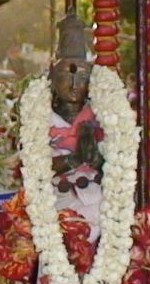
Kalarsinga Nayanar, also known as Kalarsinga, Kazharsinga, Kalarcinkan, Kalarsingan, Kalarsinganar, Kalarsingar, Kalarcingar and Kalar-chingar (Kalar-singar), was a Nayanar saint, venerated in the Hindu sect of Shaivism. He is generally counted as the fifty-fifth in the list of 63 Nayanars. While his identity remains a matter of debate, many scholars identity Kalarsinga Nayanar as the Pallava king Narasimhavarman II (Rajasimha), who reigned between 700 and 728 CE.

Munaiyaduvar, also known as Manai Aduvar Nayanar, Munaiyaduvar Nayanar, Munayaduvar, Munayaduvaar, Munaiyaduvaar and Munaiyatuvar, was a Nayanar saint, venerated in the Hindu sect of Shaivism. He is generally counted as the 52nd in the list of 63 Nayanars. Munaiyaduvar is described as a mercenary soldier, who would fight for the weak and vanished and use the fees received in service of his patron deity Shiva and the god's devotees.
Ilayankudi Maranar, also known Ilaiyangudi Nayanar, Ilaiyankuti Nayanar, Ilayangudi Mara Nayanar, is a Nayanar saint, venerated in the Hindu sect of Shaivism. He is generally counted as the fourth in the list of 63 Nayanars. He is also called Marar, Maran and Mara Nayanar, names he shares with Somasi Mara Nayanar. The two Nayanars are generally differentiated by the prefixes "Ilayankudi" and "Somasi".
Meiporul Nayanar known as Meypporul Nayanar, Meipporul (Meypporul), Meiporular, Meypporular, Maiporul Nayanar and Miladudaiyar is a Nayanar saint, venerated in the Hindu sect of Shaivism. He is generally counted as the fifth in the list of 63 Nayanars.

Iyarpagai Nayanar, also known as Iyarpagaiar, Iyarpahai Nayanar, Iyarpagaiya Nayanar and Iyarppakai Nayanar is a Nayanar saint, venerated in the Hindu sect of Shaivism. He is generally counted as the third in the list of 63 Nayanars.

Tiru Nilakanta Yazhpanar was a Nayanar saint, venerated in the Hindu sect of Shaivism. He is generally counted as the sixty-first in the list of 63 Nayanars. While the first part of his name can be spelt as Tirunilakanta, Tirunilakantha, Tiru Neelakanta, Tiru Nilakanta, Nilakantan and Thiruneelakanda, Yazhpanar is spelt as variously as Yalppanar, Yalapannar, Yalpanar and Yazhpaanar. He is described as a companion of Sambandar, one of the most prominent Nayanars.
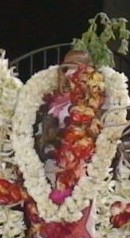
Tirunilakanta Nayanar, also known as Tirunilakanta, Nilakantan and Tirunilakantar (Thiruneelakandar) was a Nayanar saint, venerated in the Hindu sect of Shaivism. He is generally counted as the second in the list of 63 Nayanars.
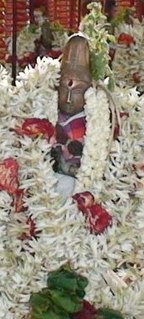
Tirunilanakka Nayanar, also known Tiruneelanakka, Nilanakkar and Nilanakkan, was a Nayanar saint, venerated in the Hindu sect of Shaivism. He is generally counted as the twenty-eighth in the list of 63 Nayanars. He is described as a contemporary of Sambandar, one of the most prominent Nayanars.




